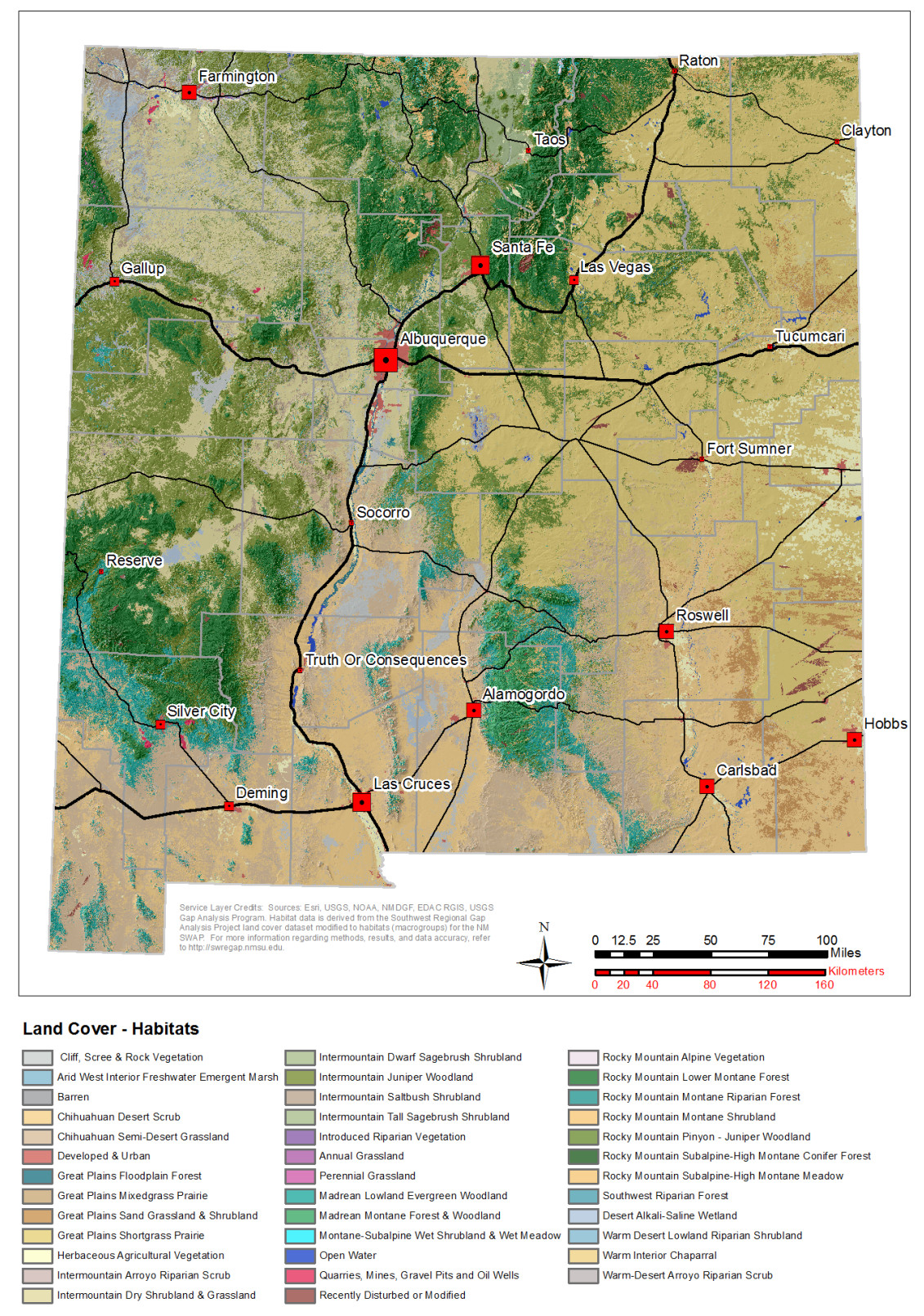Conservation strategies for SGCN revolve around understanding and effectively managing the terrestrial and aquatic habitats they occupy. Here, habitats are identified within and among ecoregions and watersheds to provide a focus for addressing conservation threats, actions, and identifying conservation opportunities for target species.
SWAP Aquatic Habitats are:
- Perennial and ephemeral waters found in streams, lakes, reservoirs, marshes, and springs
- There are eight specific aquatic habitats in New Mexico that were mapped using the National Hydrography Dataset and aerial photography from the National Agriculture Imagery Program.
- They are described in terms of persistence, temperature regimes and environment following state standards.
- Aquatic habitats are a priority because of New Mexico’s limited water supply and surrounding land use impacts.
SWAP Terrestrial Habitats are:
- Grouped into six general types with 33 finer-scale habitats.
- Mapped based on SWReGAP 2005
- Linked to the US National Vegetation Classification System (USNVC) Macrogroup descriptions to provide detailed information on composition and ecology.
- Are tiered reflect their habitat value and needs for conservation (Tier 1 through 4: most to least urgent; Tier 5: non-habitat) with riparian and wetland habitats ranking highest.

